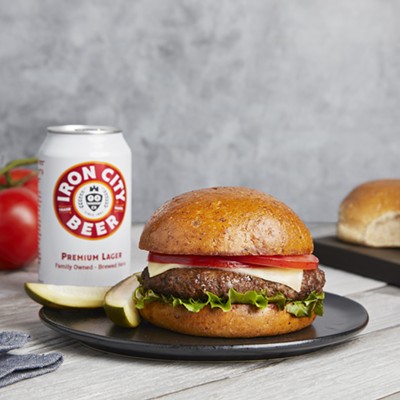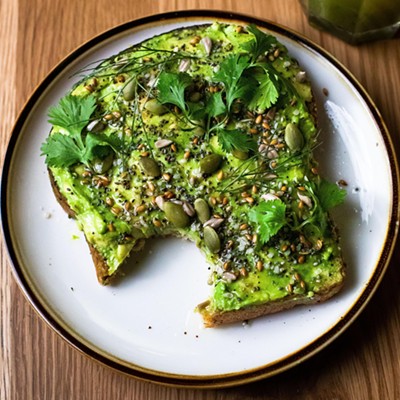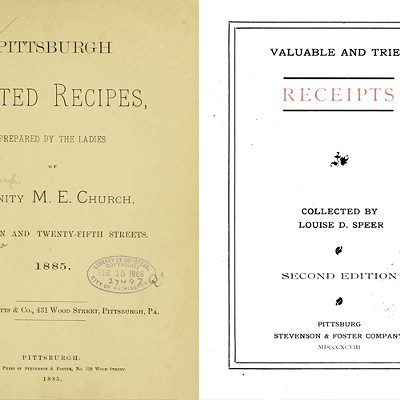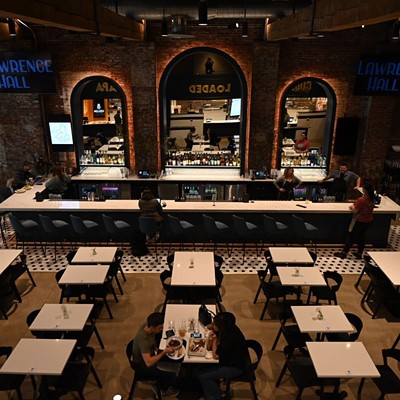Pan Asian Kitchen is a restaurant that challenges a Google search. Taken together, the three words seem more descriptive than nominative, and capture a broad net of Asian-ish restaurant results. But shortened to “Pan,” as it is on the restaurant’s sign and logo, the name plucks specific, pleasing synapses of both minimalism and double entendre.
Opened in the former Tamari space on Butler Street by the group that runs the Andora trio of restaurants, Pan serves a decidedly upscale selection of — you guessed it — pan-Asian foods. The sushi creations are extraordinarily imaginative, with nary an option you might find at any traditional sushi house. The rest of the menu is rather more conservative, offering appealing, but not daring, updates of familiar dishes from the cuisines of East and Southeast Asia. We think this is a wise approach. Classics don’t need to be reinvented, and versions such as chicken tom kha with noodles and bok choi, or char siu-style hanger steak with a blood-orange sauce, allow us to put the kitchen’s innovations in a familiar context.
Pan’s dumplings might be the most traditional of all, with ground pork and napa cabbage in a smooth, tender wrapper, served alongside a sesame-soy dipping sauce. They were good, juicy inside and dense with ingredients. By contrast, wok-blistered shishito peppers were served with Brussels sprouts in a pomegranate-spiked soy sauce, a combination that seemed all over the place but held together pretty well. Though the sprouts, as is so often the case, could have been cooked a bit more.
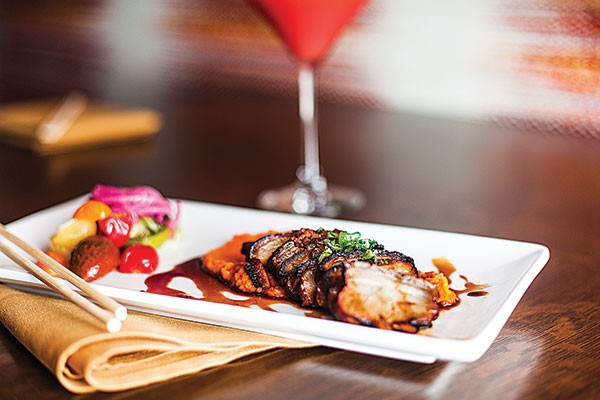
We were surprised when edamame arrived already shelled and tossed with a truffle soy sauce, but the smoky, earthy truffle flavoring nicely augmented the slight sweetness of the beans. It was a large serving, though, and best for sharing; to eat the whole thing oneself would have wearied the palate.
Just the opposite with the Angry Snapper maki sushi, which was so exciting we wished for more. Spicy tuna and snapper, cucumber and avocado, tobiko and jalapeño, tempura crunch and gochujong sauce: To say there was a lot to this roll would be an understatement. But each ingredient was judiciously applied and cleverly balanced against contrasting components, as with the briny pop of the fish eggs against the vegetal spice of the paper-thin pepper slices, or the intense, fermented Korean condiment against the background crunch of the tempura. This was a rare big roll that worked just as well as the smaller, simpler sushi-bar classics.
Pan also does excellent work on the grill. Salmon with seaweed salad and pad Thai sauce was perfect, with a succulent, translucent interior and a pale pink and lightly charred exterior; the tamarind-inflected sauce (which we ordered on the side) was superfluous.
Kurobota pork belly, from heritage Berkshire hogs — started as a Sichuan-style braise, but, finished with the grill — took on a thin but intensely flavored layer of char that wonderfully counterbalanced the rich interior. (Although, truthfully, it was less rich than we expected from braised belly.) But if the belly was missing richness, the bed on which it was laid was missing flavor almost entirely. We expected a purée of carrots, Japanese yam and ginger to offer an interplay of soft sweetness and lively zing, but instead it was more like mashed potatoes.
Blandness also kept the Chang Mai cauliflower from living up to its potential. Thai aromatic rice, roasted cauliflower, Brussels sprouts, crispy tofu, coconut and red curry sauce: It sounded like a vegetarian delight, packed with complex flavors and textures. But the tofu was unpleasantly mealy, the vegetables noticeably sulphurous, and neither the curry nor the meager single wedge of lime served with this dish packed enough heft to tip the balance.
Shaved pork cheeks made an outstanding component of a dish that was like, but unlike, pad Thai. The tangy lime element was muted, and the crunch of bean sprouts was absent. But the pork cheeks were extraordinarily tender and smoky, presumably from wok hei (“breath of the wok”), the distinct flavor imparted when food flies above the rim of the wok and is briefly exposed directly to the high flame.
Rare is the restaurant where you can’t go wrong with anything you order. Pan may not rise to this elusive height, but you are likely to find a favorite dish you’ll come back for, and sushi lovers, especially, should take note.



